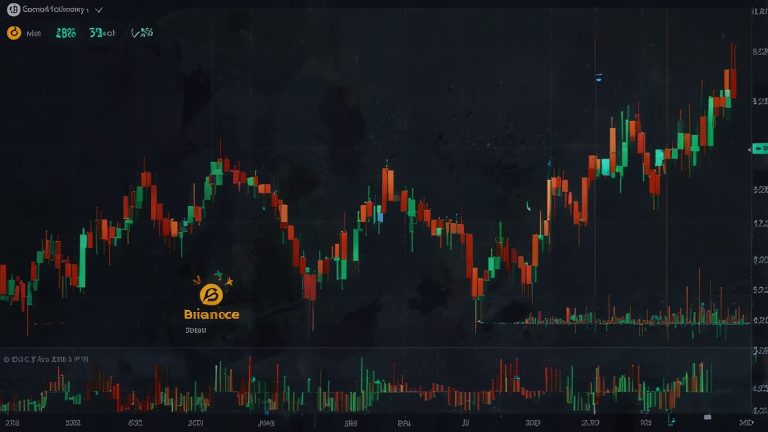October 28, 2025 – Battery X Metals Inc. (CSE: BATX) is officially carrying out a 20:1 share consolidation as part of a strategic move to position itself to attract institutional investors and streamline its capital structure.
The merger will lower the company’s outstanding common shares from about 70.2 million to about 3.5 million shares as it seeks to boost the profile of its stock in the competitive Canadian junior mining industry. The timing of this growth is crucial to the energy transition industry, where battery metal demand is booming as the world is electrified.
The release highlights the efforts of Battery X Metals to expand its operations in the lithium-ion battery exploration, rebalancing and recycling. Due to the rapid pace of the adoption of electric vehicles and the growth of renewable energy storage, such as Battery X are in danger of having to demonstrate financial strength to receive funding to implement bold projects.
Company History: 360deg Battery Sustainability
Battery X Metals, which is based in Vancouver, British Columbia, has established its niche as a company that is integrated into the battery metals value chain. In contrast to the conventional miners who only participated in the extraction process, the company has also adopted a 360-degree growth strategy, which involves the exploration of the available resources, technology to enhance the battery life, and recycling at the end of life.
Such a diversified framework keeps Battery X in the midst of leveraging the complete lifecycle of the lithium-ion batteries, including sourcing of raw materials up to sustainable disposal.
The major assets are potential lithium, cobalt, and nickel exploration sites in North America, which are important to EV batteries. The new development of proprietary technologies in recycling has enabled the company to extract up to 95 per cent of useful metals in used batteries, minimising environmental impact and also saving on the expenses incurred by manufacturers.
Battery X is a company with more than 15 years of experience in the field of this project, along with a team of experienced geologists and engineers, which has managed to attract a substantial amount of equity funding amounting to over 15 million dollars since its 2022 initial issue on the Canadian Securities Exchange (CSE).
The presence of the company on the OTCQB (BATXF) and the Frankfurt Stock Exchange (FSE: 5YW) already widened the international scope of the company, yet executives point out that such a large number of shares has adversely affected the liquidity and discouraged further investors.
The current consolidation takes this directly on the chin, which is also in line with the overall trends of the TSX Venture Exchange of the junior miners consolidating to have their minimum pricing threshold met by the exchange and to gain better visibility.
Information on the Share Consolidation: Rules and Schedule
The 20:1 consolidation, which will be presented to the shareholders during the annual general meeting on July 16, 2025, will amalgamate all 20 pre-consolidation shares into a single new share.
Such a reverse split does not affect the underlying value of the company but will adjust that share price by a similar percentage, possibly elevating it in price, off of sub-penny levels, to in the vicinity of $0.20 per share as per recent trade.
Consolidated basis trading opened this morning in the CSE, and the tickers in all the exchanges were the same. The new CUSIP is 07135M302 and ISIN CA07135M3021. At that, fractions under 0.5 will be cancelled without compensation, and fractions of 0.5 and above will be rounded up to a full share, pursuant to the Business Corporations Act of British Columbia.
The registered holders of physical certificates will have to deliver the certificates to the transfer agent, Endeavour Trust Corporation, along with a letter of transmittal in order to get post-consolidation certificates.
Automatic adjustments will be made on accounts of beneficial owners holding through brokers. The company thinks that the process will go smoothly and the company will file all compliance filings on SEDAR+ before the end of the day.
It is not the first reorganisation of Battery X; a small 5:1 division in 2023 prepares to realise further growth. The management emphasises that there is no issuance of new shares, thus maintaining equity among the current stakeholders.
Strategic Rationality: Marketability in a Rapidly Growing Industry
The CEO, Massimo Bellini Bressi, emphasised the consolidation as one of the pillars of a long-term vision of the firm. By decreasing the number of shares, we will be making the company a more appealing investment vehicle to indicate maturity and attention, Bressi declared in a release.
The move will increase the flexibility of our balance sheet and help us easily create partnerships with big car manufacturers and technology companies that are interested in sustainable supply chains.
Under the Canadian critical minerals approach, Battery X can enjoy federal incentives such as the Critical Minerals Infrastructure Fund of one point five billion dollars. The merger would also lead to accessibility to bigger grants, which would allow faster establishment of a flagship recycling plant in Quebec that would be commissioned in 2026.
Analysts consider this a good time, considering the volatility of the TSX in the recent past. On October 27, which was yesterday, the S&P/TSX Composite fell by 0.25% to 30,276 points, due to the weakness of the energy sector.
Non-energy stocks, however, which include miners, reversed their gains today by 0.8% supported by an increase in metal prices. Pre-consolidation Battery X shares, which currently trade at $0.01, are characteristic of the poor illiquidity of junior miners, which highlights the necessity of this reset.
Implications for Investors: Future Opportunities and Threats
To shareholders, the short-term impact is an increase in nominal share price, which could enhance trading pressures and less administrative strains imposed by institutions with minimum price floors. In the long run, it may bring value in the form of analyst coverage and index addition, which may make the stock re-rated.
Nevertheless, reverse splits are usually stigmatised in equity markets, and at times they can be indicative of distress, but in the case of Battery X, it is a proactive move. The company is highly capitalised, with its next 12 months of cash reserves standing at $2.8 million and zero debt as at Q2 2025. The next catalysts are Q4 Ontario lithium project drilling results and pilot testing of recycling technology, both of which are anticipated at the end of the year.
There are still risks, such as commodity prices and regulatory obstacles during mineral permitting. SEDAR+ is a tool to be tracked by investors, as plans are always executed depending on the market conditions and future prospects.
Extended Canadian Market Framework: TSX Sails through Economic Headwinds
The news this day is coming in a mixed bag of news for Canadian equities. The Bank of Canada has its interest rate decision tomorrow, and the markets are betting that it will yield 25 basis points, taking the interest rate down to 3.75, which would push the resource stocks even higher. The distributions announced yesterday by BlackRock Canada give tailwinds to holders of ETFs in metals.
Battery X and other penny stocks have taken the focus in spotlight this month, and TSX Venture-listed stocks are on average 5% up amid the uncertainties in the U.S. election. Other peers like the Westbridge Renewable Energy and Yorbeau Resources have recorded 15-20 per cent gains, which prove the momentum in the sector.
Looking Forward: Battery X’s Role in the Clean Energy Revolution
With the world nearing net-zero emissions, the consolidation of Battery X Metals is a maturation milestone towards being a mid-level competitor. As the world will consume lithium 4 times more by 2030, according to BloombergNEF, combined forces such as this Vancouver company will have disproportionate returns.
The CSE may be the attraction of new interest on the day in the eyes of investors as they monitor volume increases that follow a date with consolidation. In the case of Battery X, the actual test will be to transform structural changes into operational wins, which will include drilling hits, technological breakthroughs, and strategic alliances that bring it from the explorer to the essential supplier in the green economy of Canada.












 Bitcoin
Bitcoin  Ethereum
Ethereum  Tether
Tether  XRP
XRP  USDC
USDC  Wrapped SOL
Wrapped SOL  TRON
TRON  Lido Staked Ether
Lido Staked Ether  Cardano
Cardano  Avalanche
Avalanche  Toncoin
Toncoin